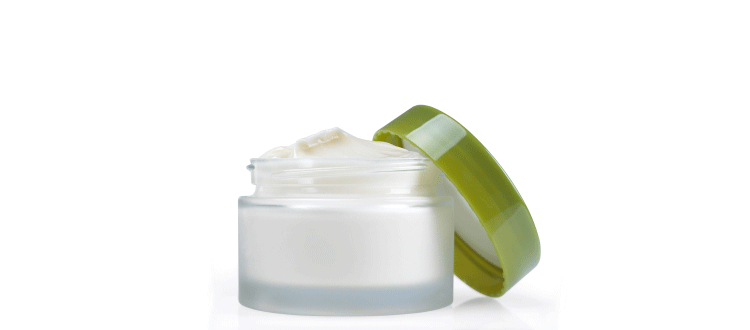NeuroToxic No-Brainer: Mercury Skin Whiteners
 |
|
Ann Blake, PhD |
As a scientist who spends her professional life looking for safer alternatives to industrial chemicals, I usually find myself arguing passionately for precaution when faced with the first indicators that a chemical might be causing harm to human health or the environment. There are times, though, when it is very clear that a chemical is causing direct, extreme harm, and we continue to actively use it in products because society and the beauty industry prey on our desire to be “beautiful,” whatever that means.
A no-brainer case in point is skin whiteners, marketed to dark-skinned immigrant communities all over the US, but also all over Africa and Asia, where even in places like tropical Singapore, 85 miles north of the equator, ubiquitous ads feature porcelain-skinned Japanese women, held up as the beauty ideal. In the Philippines, the local Food and Drug Administration has banned several brands of skin whitening products containing toxic mercury salts, to little effect. The products can still be readily found in the street markets in Manila and other major cities. My colleagues at EcoWaste Coalition continue to find products with 12,000 or more parts per million of mercury.
Yes, you read that right. Grams of a heavy metal that we’ve known for decades causes brain damage and severe birth defects in the developing fetus, at levels thousands of times lower than this. Let that sink in; thousands of times lower[i]. Products manufactured primarily in China and India, with some from local entrepreneurs all over South East Asia, intentionally add mercury, in the form of mercury chloride, mercury iodide, or ammoniated mercury to products to make your skin whiter. (We’re talking about your face; we’ll get to underarms and vaginal bleaching another time.)
Around the globe, this is a current and present threat. The World Health Organization reports that in China, Malaysia, the Philippines and Korea, 40% of women use skin whiteners. The numbers of women in African countries using these products vary from 25 to 59%. In India, 61% of the entire skin care market is skin lightening products. As recently as last month, the Centre for Science and Environment in New Delhi found that 44% of skin-whitening products on the market in India contained mercury.
Last fall the US FDA issued a warning about skin whitening products containing more than 1 part per million mercury in products sold in the US. In January 2014, the California Department of Public Health issued a similar warning for products found in the California market. The Minnesota Department of Public Health has warning factsheets in multiple languages accompanied by pictures of the offending products. And it’s not just mercury; other skin lightening products contain hydroquinone, a suspected human carcinogen. This is what we fondly refer to in the chemicals world as a “regrettable substitution.”
The chemical content is scary enough; the marketing is downright horrifying. In Thailand last fall, global consumer products company Unilever aired an ad for Citra Pearly White Body Lotion that, according to the Guardian news story, “appeared to offer university scholarships to students with lighter skin.” Controversy about the racist overtones exploded and the ad was taken off the air.
While most of the marketing is directed at women, men are not immune; skin whiteners with names like Fair and Handsome are marketed to Indian men in ads featuring handsome Bollywood leading men. Now, the products in these mind-boggling ads are not necessarily the ones with mercury in them, but the driving motivation is the same.
In the world of safer chemicals and precaution we try to start conversations with the question: “Is it necessary?” In this case, the answer is not a scientific one; it’s societal. The perception across Asia and Africa remains strong that if you are fair, you are more beautiful and more likely to be successful.
My own experience with this mindset made me an early skeptic of perceptions of beauty. I grew up as a mixed race girl in Thailand and freshly post-colonial Malaysia in the 60s and 70s. My face was basically a Rorschach for anyone with an opinion on skin color and beauty. I was openly admired for my “fair” skin at the same time that I was busily going out in the sun to get as brown as I could to look more like my Asian mother. Historically and culturally, being fair in Asia meant that you were wealthy enough to not work out in the fields where your skin would darken in the sun. The rich irony, of course, is the epidemic of skin cancer in the fair-skinned part of the world where being tan was the code for having enough leisure and disposable income to bask on a beach.
Dark-skinned women around the world are fighting back with dark-is-beautiful campaigns. What can you do, aside from the obvious, which is to avoid these products like the plague? Start a conversation about those touchy subjects like why we have to look a certain way to be “beautiful” at the cost of our health. Ask why we have to have the impossible dimensions of a Barbie doll or runway model, hair that’s straighter or curlier, or skin that’s some color other than our own.
In the spring of 2012 I had the distinct pleasure of presenting to 150 local women barangay (neighborhood) leaders in Cebu City in the southern Philippines about toxic chemicals in cosmetics, including skin whiteners. After my talk, one of the Cebuano women took the microphone and articulated a thought that has driven me ever since: “It is empowerment”, she said, “that makes a woman beautiful.” Amen to that, sister.
Ann Blake, Ph.D., is an independent consultant with over 20 years of experience in toxics reduction strategies that includes creating criteria for environmentally preferable purchasing, ecolabels and product rating systems as well as local, national and international chemicals policy reform.
[i] The US EPA’s established oral RfD or reference dose for non-carcinogenic effects of mercury is 0.0001 mg/kg/day.



